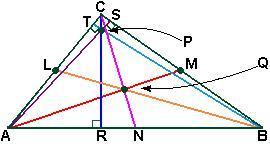
Mathematics, 22.04.2020 02:39 hottie20
A cold beer is heating up at a rate proportional to the difference between room temperature and the temperature of the beer. Denote by y(t) the temperature difference, i. e. y(t)=R-b(t), where R is room temperature and b(t) is beer temperature in degrees Fahrenheit. Here t is the time elapsed since the beer is poured, measured in minutes. The cooling of the beer is governed by the equation =ky(t) where k is a constant. (a) (3 points) Differentiate y(t), and then plug in y'(t) and y(t) to the above equation and check that both sides of the equation are equal. (b) (3 points) Now suppose that when the beer is poured, it is at 35 degrees. 10 minutes later, it is at 55 degrees. Room temperature R throughout is 75 degrees Fahrenheit. Use this information to figure out the unknown constants C and k and to determine the temperature of the beer b(t) as a function of time. (c) (3 points) At what time will the temperature of the beer be 70 degrees?

Answers: 3


Another question on Mathematics

Mathematics, 21.06.2019 13:30
Which transformations could have occurred to map △abc to △a"b"c"? a rotation and a reflection a translation and a dilation a reflection and a dilation a dilation and a rotation
Answers: 1

Mathematics, 21.06.2019 18:00
Ijust need to see how to do this. so you don’t have to answer all of them just a step by step explanation of one.
Answers: 3

Mathematics, 21.06.2019 23:00
The equation shown below represents function f. f(x)= -2x+5 the graph shown below represents function g. which of the following statements is true? a. over the interval [2, 4], the average rate of change of f is the same as the average rate of change of g. the y-intercept of function f is less than the y-intercept of function g. b. over the interval [2, 4], the average rate of change of f is greater than the average rate of change of g. the y-intercept of function f is greater than the y-intercept of function g. c. over the interval [2, 4], the average rate of change of f is the same as the average rate of change of g. the y-intercept of function f is greater than the y-intercept of function g. d. over the interval [2, 4], the average rate of change of f is less than the average rate of change of g. the y-intercept of function f is the same as the y-intercept of function g.
Answers: 1

Mathematics, 21.06.2019 23:00
Is a square always, sometimes, or never a parallelogram
Answers: 2
You know the right answer?
A cold beer is heating up at a rate proportional to the difference between room temperature and the...
Questions

Spanish, 05.07.2019 18:00

Biology, 05.07.2019 18:00

Mathematics, 05.07.2019 18:00

Biology, 05.07.2019 18:00


Chemistry, 05.07.2019 18:00


English, 05.07.2019 18:00


SAT, 05.07.2019 18:00

Biology, 05.07.2019 18:00


Mathematics, 05.07.2019 18:00

Spanish, 05.07.2019 18:00

History, 05.07.2019 18:00

Computers and Technology, 05.07.2019 18:00

Mathematics, 05.07.2019 18:00



Chemistry, 05.07.2019 18:00




